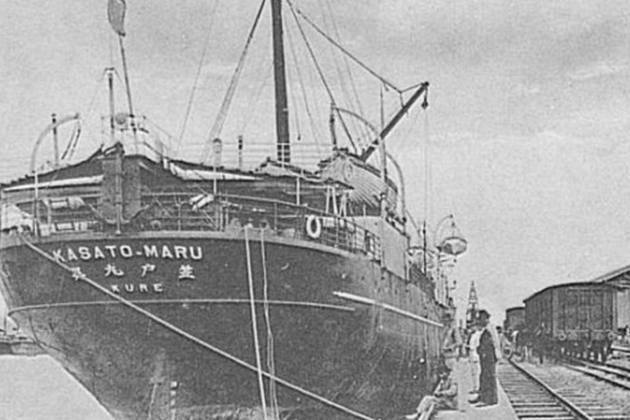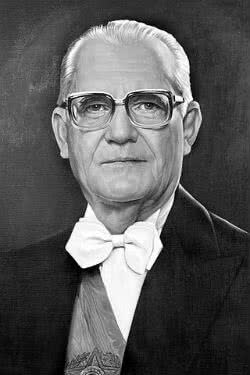THE Constitution of 1891 was the second in Brazilian history and the first of the republican period. It was enacted in February 1891, as a direct consequence of the change in the form of government. It implemented significant changes for Brazil, ratifying the presidential republican system, implementing federalism and establishing the separation of State and Church.
Accessalso: Abolition of slavery - abolitionist movement and the Golden Law
Context of the creation of the 1891 Constitution
The Constitution of 1891 is inserted in the context of the change in the form of government that Brazil underwent in the late nineteenth century, when the monarchy was replaced by republic, on November 15, 1889, by means of a coup. D. Pedro II and the royal family were expelled from Brazil, it is a governmentprovisional was instituted under the presidency of Deodoro da Fonseca.
The overthrow of the Brazilian monarchy was the conclusion of a process of dissatisfaction that lasted for decades, a period in which republican thought began to gain strength in Brazil. Historians consider the year 1870 as the starting point for the dissemination of this thought due to the publication of the
republican manifesto.The 1880s were marked as a period of great political crisis in Brazil, when a framework of polarization was created that ended up undermining the monarchy's support bases. Traditional groups that helped to sustain the regime, such as the Church and the slave-growers, moved away from the monarchy.
In addition, politically, there was a very large demand in Brazil for decentralization of power. In the monarchy, power was centralized in the emperor and, as republicanism gained strength, the demand for decentralization, that is, the distribution of power in various spheres, also gained strength.
Do not stop now... There's more after the advertising ;)
This entire crisis led to the movement that began to gather since 1887 to conspire against the monarchy. In November 1889, a group formed by prominent members of society decided to put into action a coup against the monarchy. Days before the coup, they convinced Marshal Deodoro da Fonseca to join him.
At the November 15th, the coup began with Deodoro da Fonseca leading the removal of the Ministerial Cabinet occupied by the Viscount of Ouro Preto. At the end of the day, political negotiations led the councilor of Rio de Janeiro, José do Patrocínio, to carry out the declaration of proclamation of the republic in Brazil.
Accessalso: March 25 - Constitution Day in Brazil
Provisional Government
![The 1891 Constitution was enacted during the government of Brazil's first president, Marshal Deodoro da Fonseca.[1]](/f/4b76d85136dea2b9417a857b9dffd12b.jpg)
With this, a provisional government was quickly formed that organized the transition from monarchic Brazil to the republican model. It was a government formed based on improvisation and, therefore, faced a series of challenges and was marked by instability. There was a very big dispute in Brazilian politics between those who defended a exitauthoritarian and those who defended the installation of a governmentliberal based on individual freedoms.
The two initial priorities of this provisional government were to guarantee public order and replace the monarchic symbols with new symbols representing the republic. During this process, elections were called for the formation of a Constituent Assembly that would have two tasks:
Draw up a new constitution;
Elect a new president.
The elections were held in September 1890 and, according to historian Elio Chaves Flores, reflected the groups that were at the head of the Brazilian republic. It categorizes into three groups: the republicanshistories, those who supported the cause since 1870; you adherents, those who adhered to republican ideas "at the last minute" and those who were still monarchists|1|.
Elio Chaves Flores also describes the social position of the members of the Constituent Assembly, showing that “128 they were graduates, many of whom were sons and representatives of the noble class and owners of lands; 55 were military, from urban centers and middle sectors of the population; 38 were convinced monarchists who had held positions in the fallen Monarchy"|2|.
The work of the Constituent Assembly in the process of drafting the new Constitution lasted for three months and resulted in the promulgation of the Constitution in February 24, 1891. Finally, the Constituent Assembly also participated in the vote that elected Deodoro da Fonseca as president of Brazil in a constitutional manner.
Structure of the Constitution of 1891
![Cover of the first Constitution of Brazil, promulgated on February 24, 1891.[2]](/f/af0c8ad35f82ca9062b0a29c81a22bbc.jpg)
As mentioned, the Constitution of 1891 was promulgated on February 24, 1891. It was the first republican constitution in Brazil and the second in our history. Altogether, the Constitution of 1891 had 91 articles and 8 articles of transitional provisions, that is, determinations that would be valid only on a temporary basis.
The Constitution of 1891, as an instrument that ratified the change in the form of government in Brazil, brought significant changes to our country and we will highlight some of them. An important starting point is that the inspiration for its elaboration United States Constitution.
First, the new Constitution ratified republicanism as a form of government and stipulated that the presidentialism it would be the system of government of the Brazilian republic. The name of the country was decided by “United States of Brazil”, a demonstration of the North American influence on Brazilian politics.
In addition, historian Maria Efigênia Lage de Resende states that the new Constitution framed “the Brazil in the North American liberal tradition of federative organization and political individualism and economic"|3|. She also states that the great innovation of the Constitution of 1891 is federalism, a system that was implemented in an unprecedented way from 1891 onwards.
Accessalso: What was the Republic of the Sword?
Federalism
Federalism is a political system marked by the union of all the federations that form a nation. In the case of Brazil, the DistrictFederal (Union), the States and the counties they unite in order to form Brazil as a nation, but, despite being united, these federative entities each maintain their political autonomy.
Thus, in federalism, states and municipalities guaranteed themselves great political autonomy from the Federal Government. This political system implemented a great political decentralization in our country, a demand of decades from some groups in Brazilian politics. This decentralization of policy gave strength to one of the most striking features of the First Republic: the power of colonels.
Through this system, the states gained for themselves enormous power. State rulers now have great autonomy in the administration of government issues related to their space of jurisdiction. First, the ruler of the states was no longer appointed, as was the case in the monarchy, and was elected.
But in addition, the states came to hold “ownership of the mines and vacant lands located in their respective territories […]. They may also legislate on any matter that is not expressly or politically denied to them by the constitutional principles of the Union.”|4|. Thus, the states guaranteed autonomy to formulate laws, collect taxes and propose different types of actions.
The implantation of federalism, despite having resulted in the decentralization of power, contributed to Brazil, during the First Republic, being dominated by the power of oligarchies, regional groups linked to interests, above all, of large rural landowners, who dominated the politics of our country, managing the directions according to their own interests.
Accessalso: Positivism - the philosophical current that influenced the Republic in Brazil
General characteristics of the 1891 Constitution
The transformations brought about by the Constitution of 1891 were not restricted to issues relating to federalism and the form of government. With the new Charter, Brazil gave guarantees to several freedomsindividual, of which freedom of assembly, worship, expression, right to private property, etc. A significant advance was also made with the guarantee of the right to habeascorpus.
In addition, there was the official separation of state and church. Thus, Catholicism is no longer the official state religion, imposing the principle of laic State, that is, the Brazilian State was neutral in matters relating to religious issues. The principle of three powers: Executive, Legislative and judiciary.
The office of senator for life was extinguished, the president and vice president would be elected for a four-year term, without the right of reelection. In the matter of voting, the suffrageuniversalmasculine, but with some limitations. On the issue of social rights, the Constitution of 1891 does not make any kind of approach.
The Constitution of 1891 did not address the issue of land reform and it made no legal provision to attend to or guarantee newly freed slaves. Finally, the issue of voting deserves some attention, as it perfectly demonstrates the degree of social inequality in Brazil, since the right to citizenship was limited to a very small group.
readmore: Prestes Column – one of the biggest opposition movements of the First Republic
Voting Rules
The Constitution of 1891 determined the end of census vote. Thus, it was no longer necessary to prove a minimum income to be able to vote. In addition, it determined universal male suffrage for all men over the age of 21, but prevented that beggars, illiterate, low-ranking military and religious who took a vow of obedience, had the right to vote.
The new constitution made no mention of women, which means that this group did not have the right to vote. This demonstrates that the constituents still did not see women as citizens, that is, individuals endowed with political rights.
The new Constitution also ratified the profound exclusion of a large part of the Brazilian population from the right to vote. This is because the 1880s were marked by the end of slavery in Brazil, so, politicians, members and representatives of Brazil's economic elites anticipated and ended up passing a law what reduced the number of voters from 10% to 1% of the population|5|.
This law became known as the Saraiva Law, being approved in 1881 and creating a scenario in which the right to vote in Brazil was restricted to a privileged minority. With the Constitution of 1891, the number of voters increased timidly and went from 1% to 2% of the Brazilian population|6|.
Voter José Murilo de Carvalho, using Rio de Janeiro as an example, demonstrated that in the first presidential election, which had the direct vote for president and took place in 1894, the capital of Brazil had only 1.3% of the population voting. This number increased to 2.5% of the population, two years later, and reached 2.7% in the year 1910|7|.
One factor that drove away a number of voters was the violence that marked the elections in Brazil. Voting at that time was not mandatory, and it was necessary for the voter to enlist before the vote in order to cast his vote. Furthermore, the vote was not secret, making elections easily manipulated and causing many voters to be threatened.
Brazil's electoral system during the First Republic was extremely troubled. The use of halter vote to elect representatives of oligarchies and other practices of manipulation of results were common throughout the period. It was only in the 1930s that Brazil began to create devices to control electoral fraud.
Grades
|1| FLOWERS, Elio Chaves. The consolidation of the Republic: order and progress rebellions. In.: FERREIRA, Jorge and DELGADO, Lucília de Almeida Neves. Republican Brazil: the time of oligarchic liberalism: from the Proclamation of the Republic to the 1930 Revolution. Rio de Janeiro: Brazilian Civilization, 2018. P. 49.
|2| Same, note 2.
|3| RESENDE, Maria Efigênia Lage de. The political process in the First Republic and oligarchic liberalism. In.: FERREIRA, Jorge and DELGADO, Lucilia de Almeida Neves. Republican Brazil: the time of oligarchic liberalism: from the Proclamation of the Republic to the 1930 Revolution. Rio de Janeiro: Brazilian Civilization, 2018. P. 83.
|4| Idem, p. 84.
|5| CARVALHO, José Murilo de. The bestialized: Rio de Janeiro and the Republic that was not. São Paulo: Companhia das Letras, 1987, p. 43.
|6| Idem, p. 43.
|7| Idem, p. 85-86.
Image credits
[1] Public domain / Presidents Gallery
[2] Public domain / National Archives Collection
By Daniel Neves
History teacher



